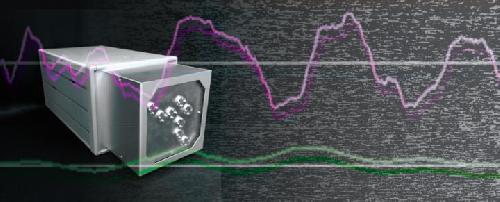Heartbeats can now be measured without placing sensors on the body, thanks to a new way to measure heartbeats remotely, in real time, and under controlled conditions with as much accuracy as electrocardiographs.
The researchers say this will allow for the development of "casual sensing" -- taking measurements as people go about their daily activities, for instance, when they are going to bed or getting ready to start the day. Kind of like a Fitbit, except accurate
"Taking measurements with sensors on the body can be stressful and troublesome, because you have to stop what you're doing," says Hiroyuki Sakai, a researcher at Panasonic. "What we tried to make was something that would offer people a way to monitor their body in a casual and relaxed environment."

The remote sensing system combines millimeter-wave spread-spectrum radar technology and a unique signal analysis algorithm that identify signals from the body.
"Heartbeats aren't the only signals the radar catches. The body sends out all sorts of signals at once, including breathing and body movement. It's a chaotic soup of information," says Toru Sato, professor of communications and computer engineering at Kyoto University. "Our algorithm differentiates all of that. It extracts waves characteristic of heart beats from the radar signal and calculates their intervals."
The team hopes that the remote sensing system, with further experimentation, will be put to practical use in the near future.
"Now that we know that remote sensing is possible, we'll need to make the measurement ability more robust so that the system can monitor subjects in various age ranges and in many different contexts," Sato concluded.


